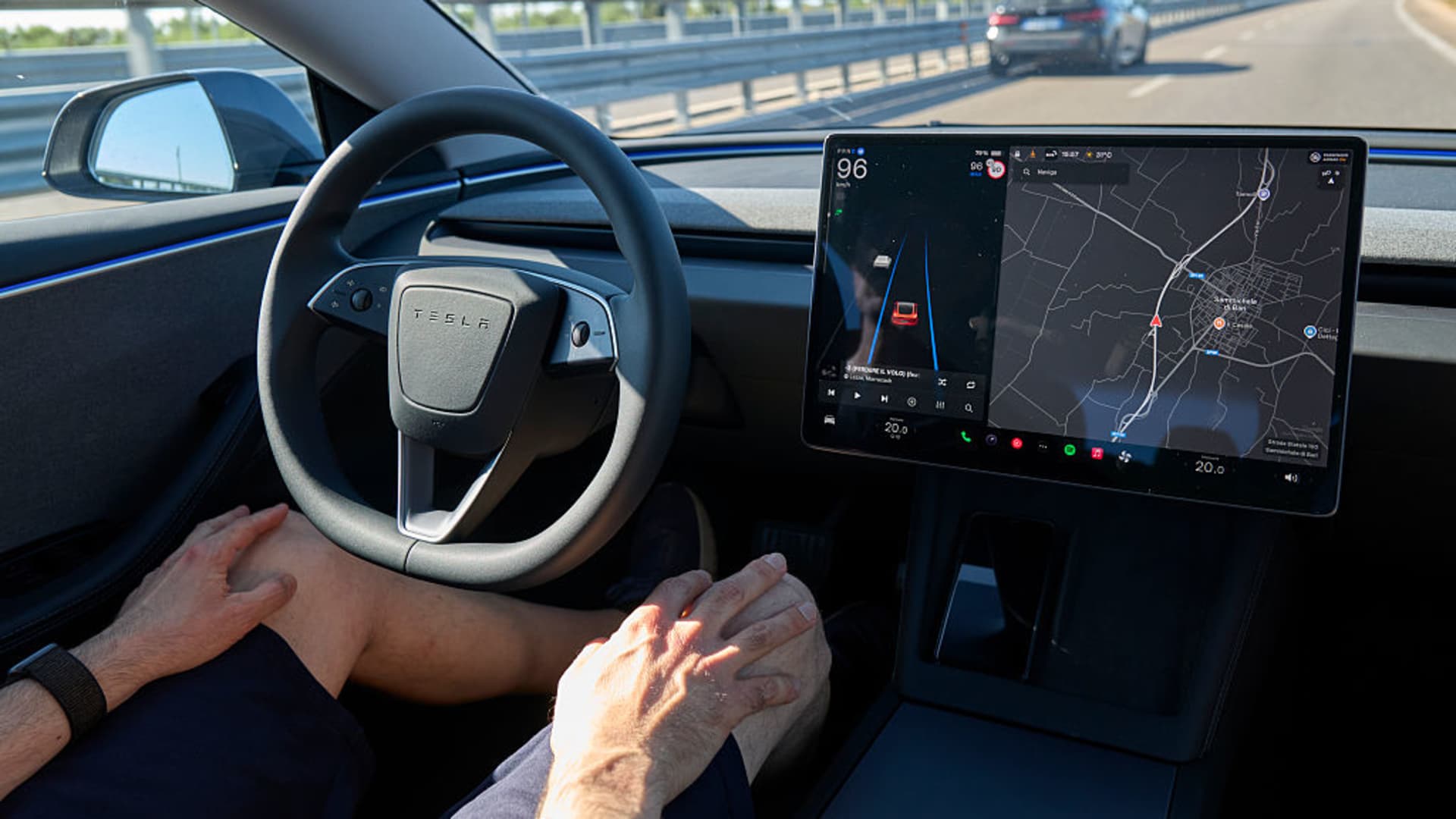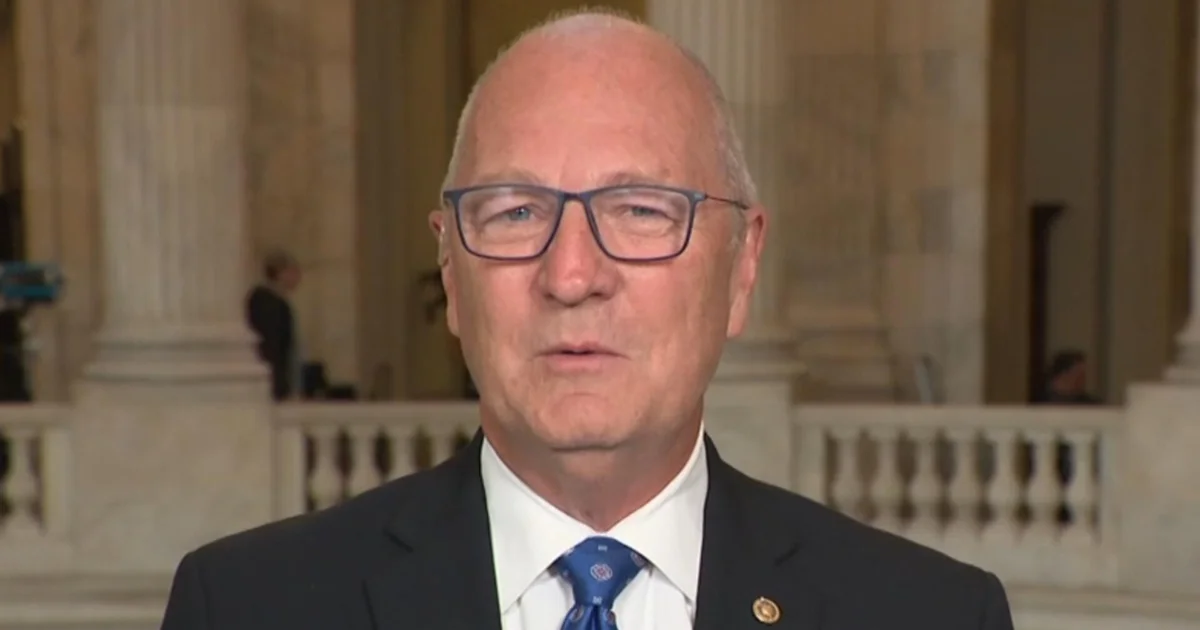Tesla prices Model Y standard below $40,000, debuting more affordable vehicle

The editorial image shows the interior of the new Tesla Model 3 with Full Self-Driving activated.
Nurphoto | Getty Images
Tesla debuted more affordable versions of its popular Model Y SUV and Model 3 sedan on Tuesday.
The Model Y standard variant is priced just below $40,000, according to Tesla’s website, and the Model 3 standard starts at around $37,000.
The company also released a new version of its Full Self-Driving (Supervised) driver assistance system early Tuesday.
The EV maker’s stock closed 4.45% lower.
Over the weekend, Elon Musk’s electric vehicle company shared a teaser clip featuring a logo-emblazoned, spinning component that could be anything from a wheel cover to a fan or turbine. The clip ended with the numbers “10/7,” indicating Tuesday’s date for the reveal.
Tesla posted a second clip to X on Sunday showing the outline of a vehicle’s headlights in the dark.
Shares climbed 5% Monday as the buzz grew online over what the announcement would be, but dipped about 3% on Tuesday. Many investors were hoping for updates on other new products such as the next-generation Roadster that Musk has promised for years.
The standard variant of the Model Y doesn’t feature a panoramic glass roof, leather seats or the light bars like the higher-end versions of the SUV. It costs about $5,000 less than the previous, entry-level version of the Model Y.
The new Model Y standard features a battery that gets 321 miles of estimated range on a full charge, compared to the 357 miles of range in a Long Range version with rear wheel drive.
The lower prices may help Tesla attract some buyers after the loss of $7,500 federal EV tax credits, which went away with President Donald Trump’s spending bill. Tesla is still facing crushing competition across the globe, including in the U.S., from EV makers, some with lower-priced offerings.
Earlier this year, Tesla had reportedly been working on a stripped-down version of the Model Y and was aiming for a price closer to $30,000. That was before President DonaldTrump‘s sweeping tariff announcements and the elimination of the tax credit.
The company hasn’t released a new model vehicle for sale since it began shipping the Cybertruck, its angular unpainted steel pickup, in late 2023.
Musk originally promoted the Cybertruck at an “unveiling” event in 2019, where his demo went awry and he shattered a window. The Cybertuck never achieved the level of popularity of Tesla’s Model 3 sedan or Model Y SUVs and has been the subject of at least eight voluntary recalls in the U.S.
With its auto sales in a multi-quarter slump, Tesla has been trying to shift investor attention to its future as a robotics and self-driving car business.
The slump has resulted, in part, from a consumer backlash against Musk, his endorsements of far-right political parties and figures, and his incendiary political rhetoric. But it’s also due to an aging lineup and increased competition from companies including Volkswagen and BYD.
In mid-October of last year, Tesla held its invitation-only, “We, Robot” event in Hollywood, where it showed off a low, two-seater Cybercab concept with no steering wheels or pedals. Musk said the driverless car would cost about $30,000.
As of the company’s second-quarter earnings call, it was not yet in production.
At an event in late 2017, Musk promised Tesla would make a next-generation Roadster, but the vehicle has never moved into production. In 2021, Musk promised the Roadster would be able to “fly,” and last year he said the elusive sports car was being redesigned in collaboration with SpaceX, his aerospace and defense contractor.
Musk has been promising to turn existing Tesla EVs into robotaxis with a software update for about a decade.
The company currently has human safety drivers in its Robotaxi-branded test and fleet vehicles, unlike robotaxi rivals like Alphabet’s Waymo and Baidu’s Apollo Go.
In the realm of humanoid robots, Musk has said Tesla’s Optimus robots will be capable of factory work or babysitting your kids, but they’ve yet to hit the market. Meanwhile, competitors like Agility Robotics and Unitree are already selling bipedal, humanoid robots.
Following a brutal first quarter that saw Tesla lose 36% of its value, the stock has been on a tear, jumping 40% in the third quarter. It’s now up 12% for the year. That stock price increase was aided by Musk, who purchased about $1 billion of Tesla stock himself in mid-September.
WATCH: Tesla teases new product launch
[title_words_as_hashtags




